Subject
- #Korean Food
- #Culture
- #Ingredients
- #Tteokbokki
- #History
Created: 2024-06-14
Created: 2024-06-14 22:41
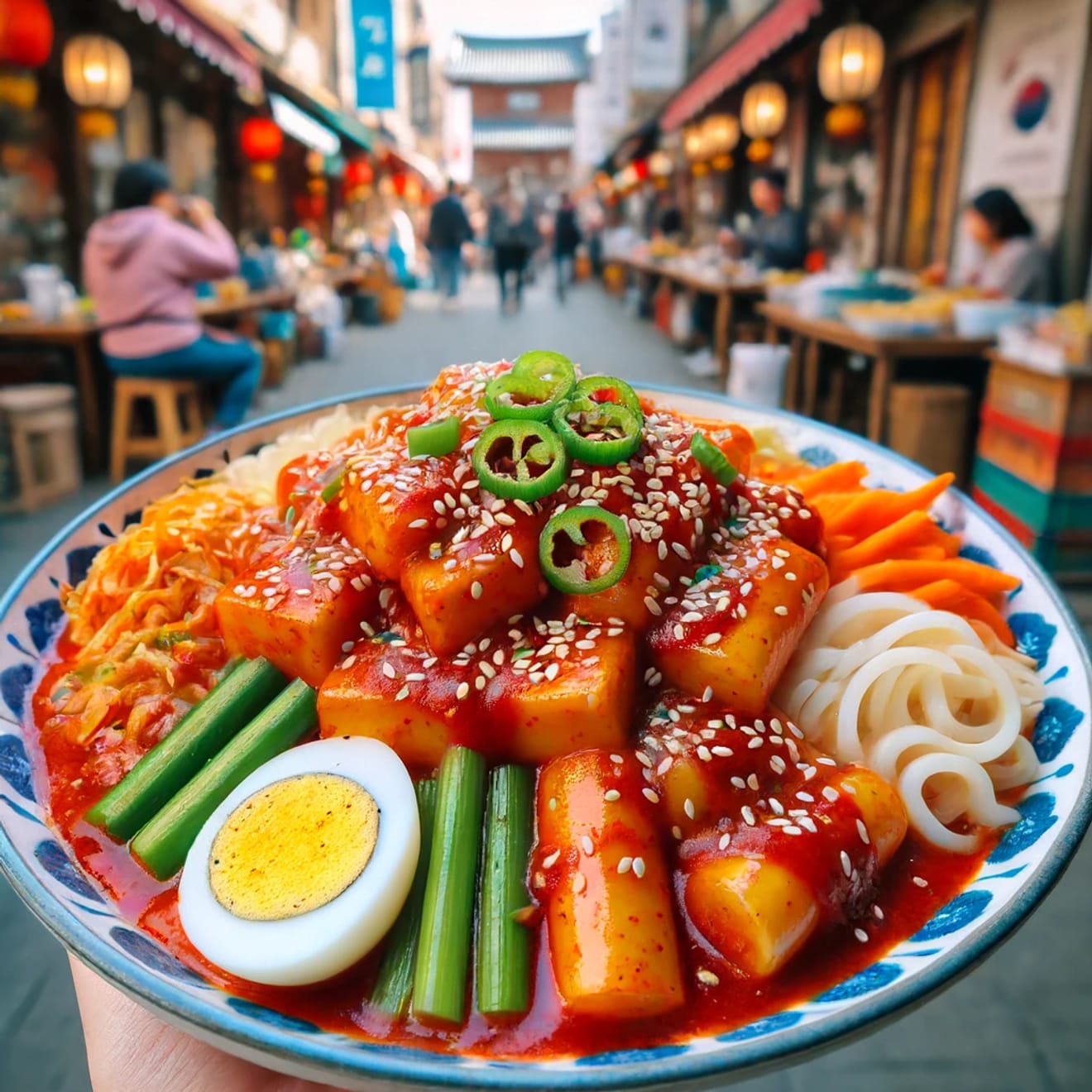
The history of tteokbokki dates back to the Joseon dynasty. Initially, 'gungjung tteokbokki' (royal court tteokbokki) made with soy sauce was prevalent. It involved stir-frying tteok and various ingredients in a soy sauce-based seasoning. The spicy tteokbokki we know today, using gochujang (Korean chili paste), is believed to have originated in Sindang-dong, Seoul, in the late 1950s. Spicy tteokbokki quickly gained popularity and spread throughout Korea.
Tteokbokki is primarily made with garaetteok (cylindrical rice cakes), gochujang, gochugaru (Korean chili powder), sugar, soy sauce, and other ingredients. Each household and restaurant may use slightly different ingredients to create their unique flavor.
Garaetteok: The main ingredient of tteokbokki, providing a chewy texture.
Gochujang: The primary seasoning that gives the dish its spicy flavor.
Gochugaru: Complements the spiciness of gochujang.
Sugar: Adds sweetness.
Soy sauce: Enhances the depth of flavor.
Eomuk (fish cake): A common addition to tteokbokki, enhancing the flavor.
Onion, Carrot: Vegetables can be added to enhance the flavor and texture.
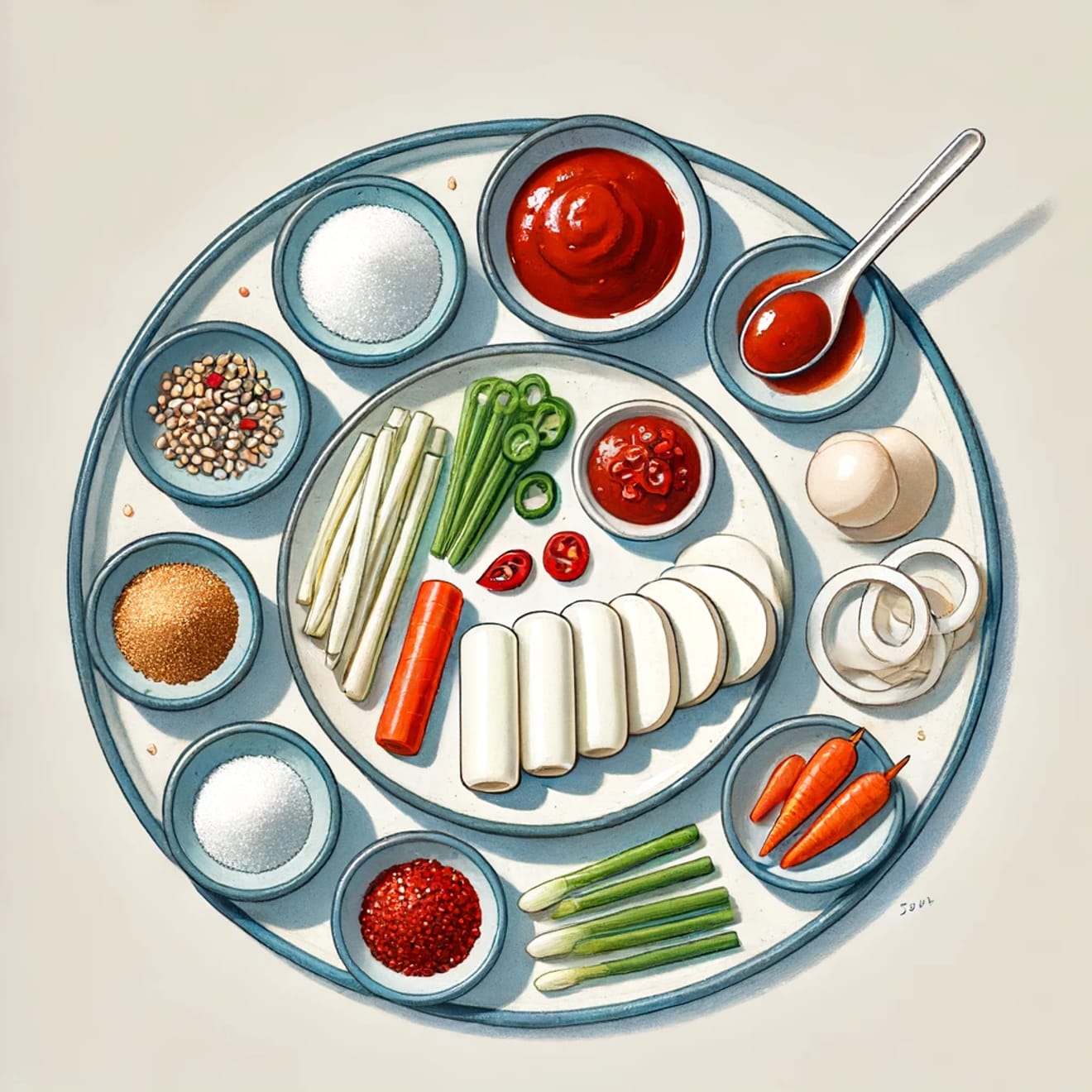
Making tteokbokki is relatively simple, but a few tips can help achieve the best flavor.
Ingredient Preparation: Cut the garaetteok into appropriate sizes, and slice the eomuk and vegetables into bite-sized pieces.
Making the Sauce: Combine gochujang, gochugaru, sugar, soy sauce, and water to create the sauce.
Cooking: Add the sauce to a pot and bring it to a boil. Then, add the tteok, eomuk, and vegetables and cook them together.
Finishing: Once all ingredients are cooked through, turn off the heat and serve on a plate.
Variations of Tteokbokki
Besides its basic form, tteokbokki comes in various variations. 'Rabokki' (tteokbokki with ramen noodles), 'Cheese Tteokbokki' (tteokbokki topped with cheese), 'Seafood Tteokbokki' (tteokbokki with seafood), and many other variations can be enjoyed according to individual preferences.
Tteokbokki is not just a dish; it encapsulates the everyday life and culture of Koreans. Starting as a street food, tteokbokki has become one of Korea's representative foods. You can find tteokbokki at school snack bars, street food stalls, and even upscale restaurants. Tteokbokki is also a food enjoyed with friends and family, strengthening bonds between people.

Located in Munjeong-dong, Songpa-gu, Seoul, this tteokbokki restaurant is famous for its tteokbokki with broth. It features a seasoning made by mixing gochujang with a broth made from dried pollack, radish, and scallions, then aged for 12 hours. The broth is known for its refreshing and clean taste, and dipping deep-fried dumplings into the tteokbokki broth is also a popular way to enjoy the dish.
Address: 33, Munjeong-ro 1-gil, Songpa-gu, Seoul
Business Hours: Weekdays 15:00 – 21:00, Weekends 13:00 – 21:00
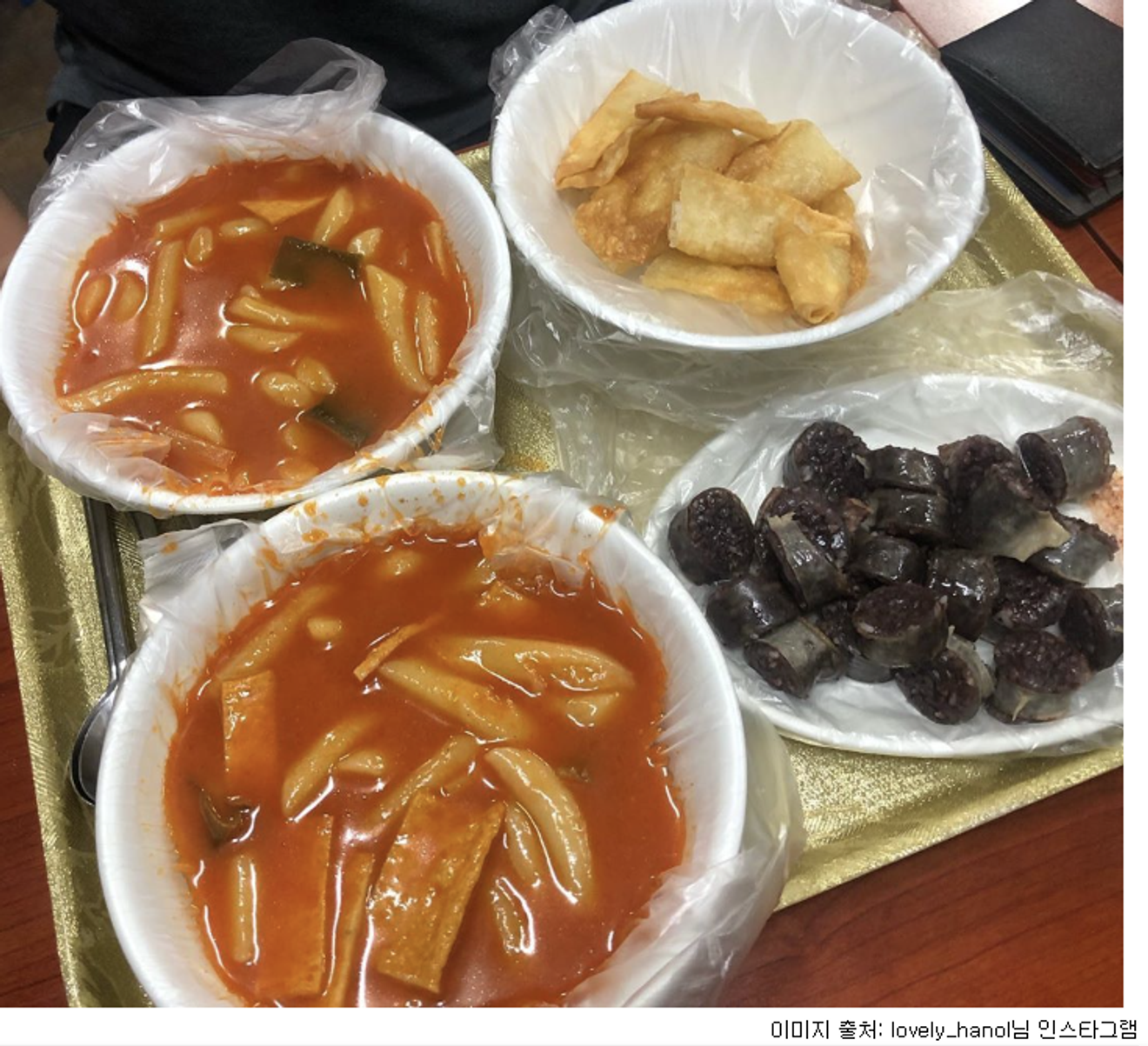
Located in Seongsu-dong, Ddukddak is popular among young people for its fusion snack menu. Its signature dish is the 'Cheese Kimmari Tteokbokki', which features a hot griddle topped with cheese, gimmari (deep-fried seaweed rolls), and oily tteokbokki. The spicy seasoning and the cheesy flavor blend harmoniously.
Address: 28, Seoul Forest 4-gil, Seongdong-gu, Seoul
Business Hours: 12:00 – 21:00, Closed on Mondays

Located in Mapo-gu, Sin Gongju Tteokbokki is known for its pairing of tteokbokki and beer. It's a popular spot for after-work relaxation, with the spicy and sweet tteokbokki complementing the refreshing beer.
Address: Mapo-gu, Seoul
Business Hours: 11:00 – 21:00

Image Source: Singongju Tteokbokki Instagram
Located in Hongdae, Geudongne Tteokbokki is famous for its tteokbokki served in a stew pot, and offers a variety of cheese tteokbokki and fried snacks. A self-service corner provides warm broth, adding to the warm and rich flavor experience.
Address: 14, Wawusan-ro 27-gil, Mapo-gu, Seoul
Business Hours: 11:00 – 21:00
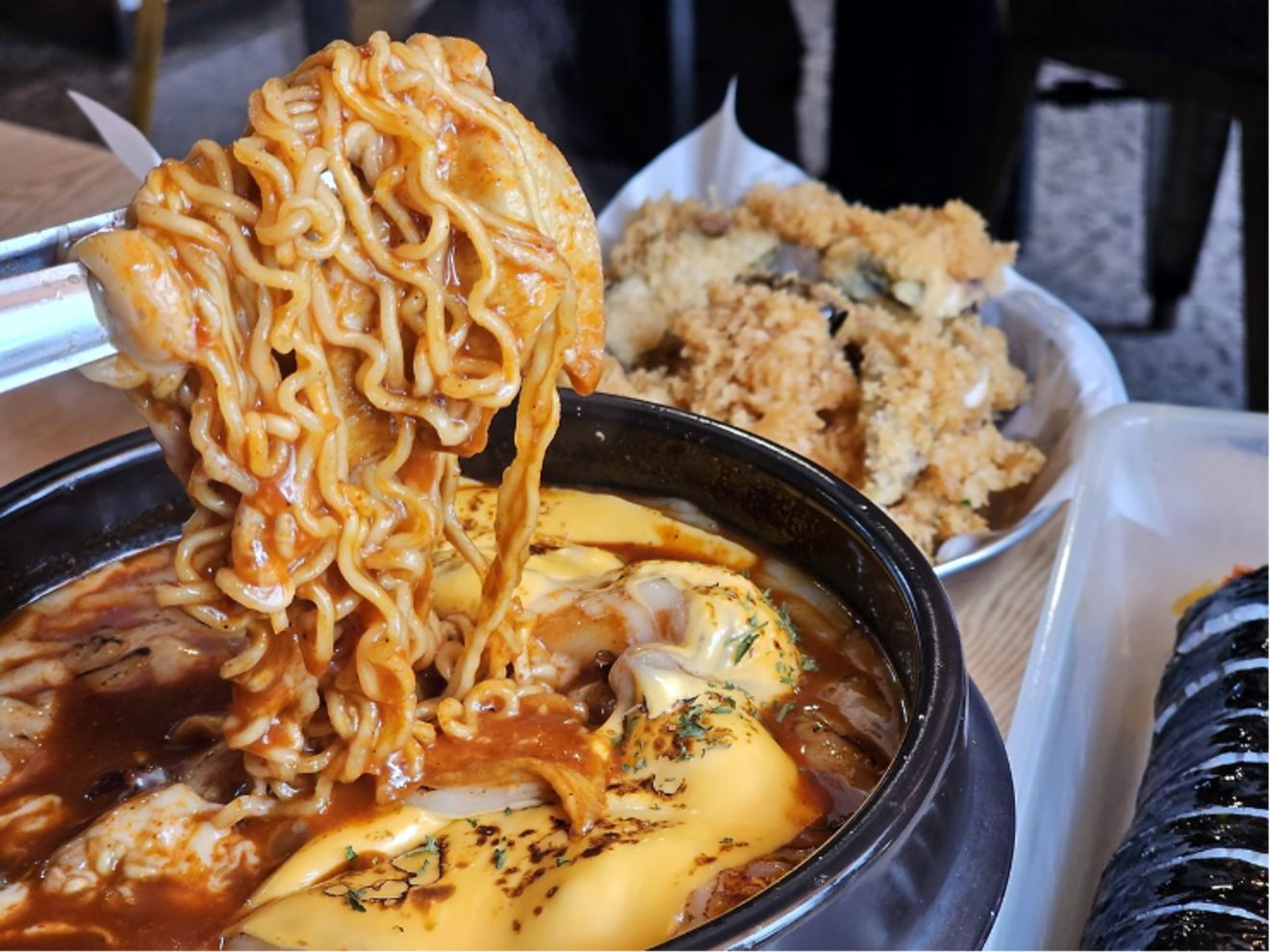
Image Source: hyo-ming's blog
Located in the Sinnonhyeon Station food street, Ppalgan Sikdang is known for its pepperoni tteokbokki. It features mozzarella cheese and pepperoni on top of the tteokbokki, giving it a pizza-like feel, and uses Vietnamese chili peppers for a clean and spicy taste.
Address: 21, Gangnam-daero 118-gil, Gangnam-gu, Seoul
Business Hours: 11:00 – 02:30, Daily
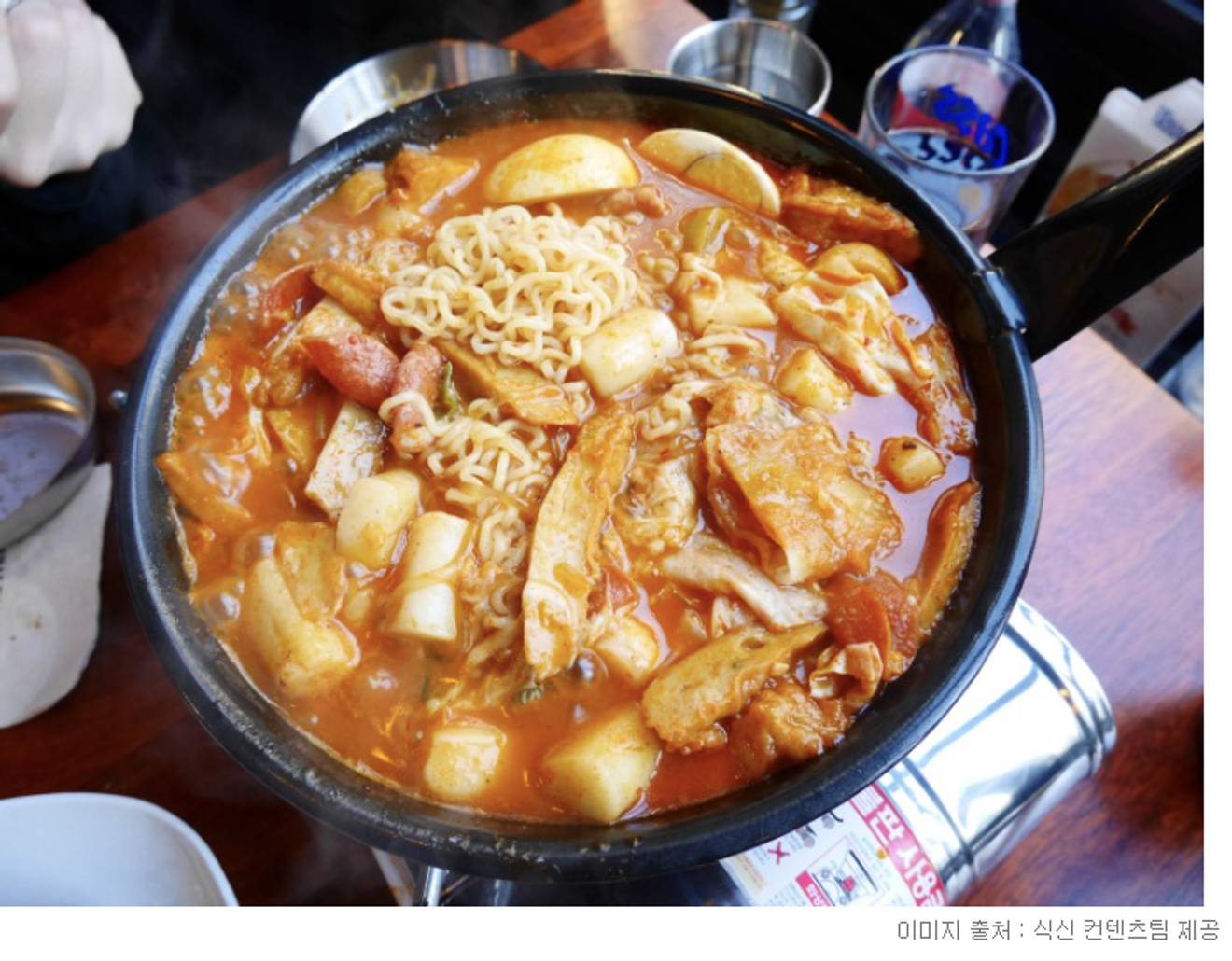
Comments0